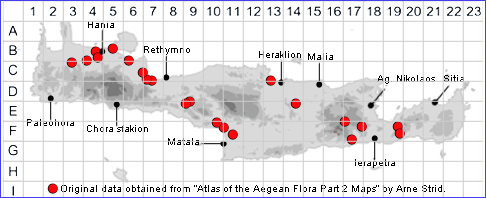
SPECIES DESCRIPTION
PULICARIA DYSENTERICA subsp. ULIGINOSA
Family and Genus:- See- COMPOSITAE
Common Names:- Common Fleabane
Homotypic Synonyms:- Inula repens, Pulicaria stevenii, Pulicaria uliginosa.
Meaning:- Pulicaria (L) Fleabane (for a plant that wards off fleas).
Dysenterica (Gr) Of dysentery (medical treatment for).
Uliginosa (L) Marsh, of swamps or marshes.
General description:- Medium, softly-hairy, with runners that take root, perennial.
Stems:-
1) 20-60 cm, erect, lanate or tomentose, freely branched above.
Leaves:-
1) Basal, oblong, narrowed at the base, withered by anthesis.
2) Cauline, cordate-sagittate, semi-amplexicaul, with sessile bases, all with
undulate margins, remotely serrate, green scabrid above, greyish-tomentose
beneath.
Flowers:-
1) Capitula, usually numerous, daisy-like, golden yellow, 15-30 mm, borne in lax-
topped clusters,
a) peduncles, 1·5-2.5 cm, not thickened above, without or with 1
bract.
2) Involucral bracts, linear to subulate, more or less lanate and glandular.
3) Ligules, c. 5 mm longer than the involucre, patent.
Fruit:-
1) Achenes, c. 1·5 mm, hairy.
2) Pappus of scales, connate for more than 1/2 their length, surrounding 14-20
hairs.
Key features:-
1) Basal leaves, withered at anthesis.
2) Stolons, present.
3) Capitula, usually numerous.
Habitat:- Damp coastal habitats, stream-banks, roadside ditches, damp scrub and
wood-land margins. 0-600(-1200) m.
Distribution:- Widespread and common throughout the Mediterranean. Somewhat
limited distribution on Crete..
Flowering time:- (May-)June-Oct.
Photos by:- Steve Lenton
